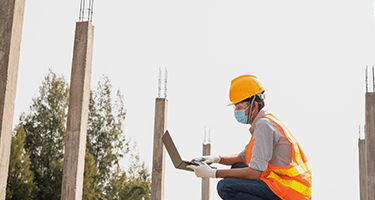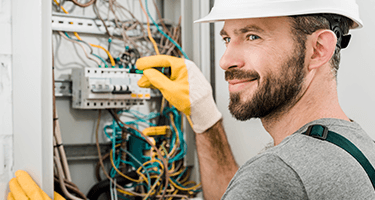How Often Should Industrial Rigging Inspections Be Performed?
The numerous risks that come with rigging projects make it necessary to regularly inspect this equipment. Rig inspection will ensure your rigging equipment is consistently safe and compliant with industry rules and regulations. There are many pieces of rigging equipment to inspect, from slings and harnesses to hooks and hoists.
Here we’ll explore what rig inspection is, how frequently you need these inspections, and how you can benefit from using rigging inspection forms to simplify inspections.
What Is Rig Inspection?
Rig inspection entails looking closely at and testing rigging equipment. The object is to make sure it’s properly maintained and presents minimal risk of mechanical failure and breakdowns. Rigging inspections are often required for equipment in the oil and gas industry. Professionals with experience conducting rig inspections are ideal for inspecting each component of a rig and gauging its condition and risks.
How Often Do You Need To Inspect Rigging Equipment?
To keep rigging equipment in working order and prevent potential issues and non-compliance, it’s important to conduct rig inspections at key points throughout the equipment’s service life.
Specifically, you should conduct inspections during these times:
When Expecting Equipment Deliveries
The first inspection should occur ahead of the delivery of rigging equipment. As soon as the supplier ships it, and you prepare it for installation at the rig site, you should first inspect it to gauge the condition of each piece of equipment before use.
Regularly for Extreme Applications
Some applications that put stress on rigging equipment and use it heavily will require more frequent inspections than other less demanding applications. Inspectors should look at the equipment before you use it. This is normally done through a routine visual inspection that takes place whenever you use it for a different shift or application. Depending on the intended use, this could require you to inspect equipment multiple times daily.
Periodically for All Equipment
If you don’t require more frequent inspections for hoisting and rigging systems, you will need to inspect equipment periodically according to standards under the Occupational Safety and Health Administration (OSHA) and the American Society of Mechanical Engineers (ASME). Some equipment will need quarterly or even monthly inspections if it undergoes heavier use. Conversely, other less frequently used equipment may only require annual inspections.
You will need to determine how frequently equipment requires inspections. This is based on the service conditions, frequency of use, the applications and frequency of application or shift changes, and other factors. Also, keep in mind that OSHA and ASME have different requirements for various components.
What Are the Four Main Components To Inspect on Your Rigging?
There are several pieces of rigging equipment that inspectors will need to look at when conducting a rig inspection. Four of these components to inspect include the following:
- Rigging hooks and shackles: These components connect all rigging equipment such as ropes and chains to avoid slippage.
- Slings: These parts help with lifting heavier loads using wire ropes.
- Blocks and pulleys: These systems can help lift heavy objects by reducing the force required to move and lift these items.
- Steel nuts and eye bolts: Rigging systems also use a combination of steel nuts and eye bolts to loop ropes and cables. They’re available in many sizes and a few different types.
In addition to these components, rigging systems may use parts such as wire ropes, turnbuckles, lifting beams, and spreader bars. You can look up the inspection criteria for each by checking with OSHA and ASME.
Who Should Inspect Rigging?
Different people can inspect rigging equipment, depending on the operation and application. For example, owners can inspect equipment periodically as needed based on OSHA and ASME regulations. Operators can also inspect equipment before each use. They can use inspection forms and tools that streamline the process, such as a sling inspection form template or a transload safety app.
Often, it’s best to designate a qualified rigger to conduct rig inspections as needed, which will keep inspections consistent and ensure the inspector gets accustomed to the inspection process. He or she can go through a complete checklist to properly inspect each piece of equipment.
OSHA and other organizations don’t require riggers to gain certification. However, this type of certification is often ideal to have. According to OSHA, a qualified rigger is someone who has gained sufficient experience or credentials demonstrating competence in this field. For instance, a qualified rigger may have worked as a rigger for many years and gained extensive knowledge, experience, and training. Another may have obtained a certificate, degree, or professional standing. Others may simply show that they can solve various rigging problems.
How Long Is a Rigging Cert Good for?
If a rigger decides to gain certification, the certification will last for five years in most cases. Exceptions to this include times when the certification serves as an extension to prior certification, in which case the certification will share the expiration date of the other certification. For instance, if a rigger first obtains rigger certification and then receives signal person certification before the rigger certification has expired, both will expire when the first five years end.
How Mobile Forms and Apps Can Help With Rig Inspection
With the right approach, you can properly inspect and maintain rigging equipment to create a consistently safe and operational environment. However, it’s important to have the right tools to help you complete inspections. These include hook and sling inspection forms and various mobile apps that give inspectors everything they need.
For some of the best solutions to help streamline the inspection process and maintain compliance and safety, turn to GoCanvas. We provide our customers with a range of rig inspection form templates and apps for all equipment types. You’ll find forms for transload safety checks, hoisting and rigging mobile forms, and more.
Regardless of what you need to inspect in your rigging configurations, GoCanvas makes it easy to complete each inspection with consistent thoroughness and efficiency. Give your qualified riggers what they need to simplify inspections and minimize safety risks and the potential for equipment failure. Through the automation of inspections, you’ll benefit from cost savings and improved processes that keep operations running smoothly.

Stay in Touch!
About GoCanvas
GoCanvas® is on a mission to simplify inspections and maximize compliance. Our intuitive platform takes care of the administrative tasks, freeing our customers to focus on what truly matters – safeguarding their people, protecting their equipment, and delivering exceptional quality to their customers.
Since 2008, thousands of companies have chosen GoCanvas as their go-to partner for seamless field operations.

Check out even more resources

The Ultimate Guide to Quality Control Inspections
Managing a construction project is a complex and stressful process. Among other things, you have to coordinate project team members, materials, and equipment and ensure that contractors are not afflicted by the potential risks and hazards present at the construction site. That said, quality means different things to different people which is why you should…

Constructions Digital Transformation
Your competition is finding faster ways to capture data and get critical insights from the field into their existing systems. In short, they’re not going bigger, they’re getting smarter. In this 15-minute broadcast on the construction industry’s digital transformation, find out why the trend is to modernize workflows – and how you can stay ahead of the curve…

See how VIP Lighting optimized efficiency with GoCanvas
VIP Lighting is a retail lighting and electrical maintenance business that services over 10,000 retail locations all over Australia and New Zealand. Before GoCanvas, VIP Lighting had two separate systems that were impossible to integrate, leading to inefficiencies. GoCanvas made it easy to integrate their systems into single, centralized platform…